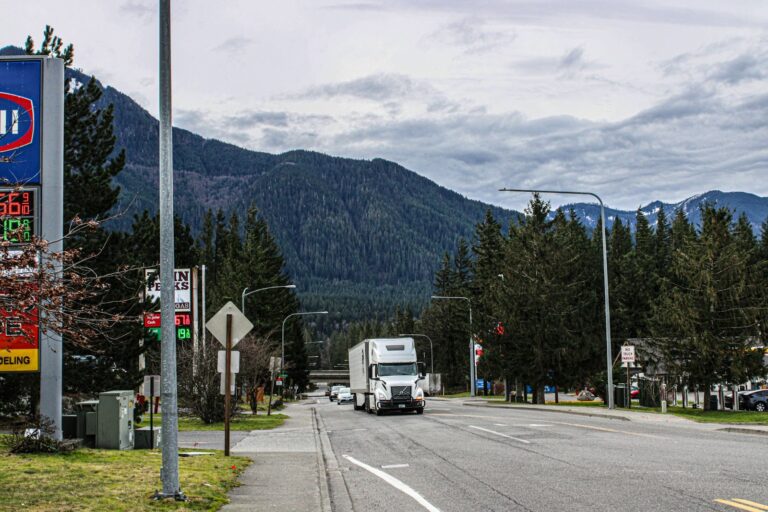Early Beginnings: The Inception of Dry Van Trucking Services
When dry van trucking was still in its infancy, it was the trucking industry that revolutionised the transportation world by offering the first viable means of shipping goods in weatherproof and securable containers. HMD Trucking, as a groundbreaker in this area, started with only a few vehicles but soon stood out from the competition through a high degree of commitment to service and operational efficiency. By the time the 20th century was coming to a close, HMD Trucking had not only increased its fleet by multiples but it was also the owner of the most modern vehicles, with technological features such as optimal load management and fuel efficiency. Their groundbreaking techniques not only reduced transportation service but also lessened the environmental impact, thus, they became the reference for the rest of the industry. This dedication to excellence at the start of the company combined with firm partnerships made HMD a reliable name in the trucking business environment across the country, which is a great example of how persistence and innovativeness can contribute to long-term success in the dry van trucking industry.
The 20th Century: Key Innovations and Milestones in Dry Van Transportation
Introduction of Aluminum Trailers: The mid-1900s were the period of the biggest change from steel to aluminum which has lightweight characteristics, thus revolutionizing the industry, and making possible to have increased cargo capacity without down the fuel efficiency.
Advent of Air Ride Suspensions: The years of 1970s were marked by the introduction of the air ride suspension, which, in turn, resulted in a significant decrease in damage caused to the cargo. This was possible because air ride suspensions provided better rides and less vibration hence, the delivery quality was improved.
Satellite Tracking Systems: In 1980s, satellite tracking technology was embedded into the dry van trailers. This proved to be a milestone in tracking accuracy and optimization of routes which directly reflected improved delivery times and real-time updates to clients.
Regulatory Milestones: The deregulation of the trucking sector through the Motor Carrier Act in the late 1980s triggered fierce competition, which in turn led to increased service efficiency and pricing innovations.
Technological Advancements: Transformations in the 1980s and 1990s
The 1980s and 1990s were the decades when the dry van trucking sector saw miraculous technological development which transformed logistics. To this end, HMD Trucking introduced the idea of systems on board computers as a means of streamlining load assignments and boosting driver communication that was unheard of in the industry previously. The breakthrough was made when the company implemented Electronic Data Interchange (EDI) technology, which rendered data exchange seamless, reduced paperwork and overall made the delivery process quicker. HMD’s decision to install the latest cutting-edge anti-lock braking systems (ABS) in this epoch, besides, also increased safety by reducing accident rates by 20% as pointed out in the internal report of the firm. All these technological advances set HMD Trucking as a high-profile innovator, initiated the creation of a reputation for dependability, and cutting-edge services in a tight competition environment.
Economic Impact: How Dry Van Trucking Shaped the U.S. Economy
Dry van trucking is a strong driving force that contributes to the economic formation of the United States. Its impact on the logistics sector, and also the economy as a whole, is indisputable. By providing efficient and cost-effective freight solutions, dry van trucking has been able to facilitate the growth of many industries, such as retail and manufacturing. To take an example, making the transportation of goods not only safe but also fast has been the key to optimizing supply chains, which in turn has allowed suppliers to extend their reach and uphold market presence.
According to a survey conducted by the American Trucking Associations, the trucking sector which is primarily made of dry van trucks transported a whopping 70% of all freight in the USA, thus yielding $700 billion, approximately, in annual revenue by 2020. By this shocking number, it is manifested that dry van trucking is anything but a minor player in the logistics business, as it keeps goods moving across the country both for the uplift of regional economies and for the sustainment of the national economy.
Also, the role of the industry in creating jobs cannot be overstated. The trucking business, dry van in particular, provides jobs for millions of people who are involved in driving trucks, and managing logistics and these jobs have always been resilient, even in challenging times, all over the United States. This job creation leads to community developments, brings at the end the positive effect on the local economy, and thanks to this gets the involvement of the consumer as well.
Modern Era: Top 5 Trends Influencing Dry Van Trucking Today
- Sustainability Initiatives: Dry van trucking has been a major force in becoming the greenest. HMD Trucking takes the lead with it fleet of trucks that are efficient and also use alternative fuels, thus its carbon footprint is greatly reduced by the program.
- Digital Optimization: HMD Trucking has free software that adapts its load-optimization and route-planning to be close to real-time. This software adds delivery accuracy to the process while decreasing transit times and costs.
- Telematics Integration: HMD Trucking uses the most sophisticated telematics which help in tracking repair and health information on vehicles so they will operate at peak performance and influence proactive maintenance as required.
- Driver Shortage Solutions: HMD takes driver training programs and technology as the key issues to attract highly skilled drivers and satisfy customer demand.
- Supply Chain Resilience: In order to deal with unforeseen global supply chain breakdowns, HMD Trucking has become nimble and adaptive, ensuring the consistency of deliveries even under the aforementioned conditions.
Environmental Considerations: The Push Towards Sustainable Practices
In the face of this transformation, dry van trucking has learned to promote and integrate environmental consciousness into every practice. To embark on this journey, the industry has taken the main step which is the conversion to low-emission engines, which in turn results in the substantial decrease of air pollutants and paves the road to the gain of cleaner air. As an example, the latest studies imply that through the implementation of new engines, long-term fleets can obtain a 90% cut down on nitrogen oxides emissions. HMD Trucking has shown such leadership in this regard, as the company has transformed its fleet by incorporating these new engines and in this way, it has achieved the status of being the first to do so in the industry.
Furthermore, the use of renewable energy infrastructure has found its way in the industry. Rooftop solar panels on trucks are being increasingly explored as a means of powering auxiliary systems, thus helping conserve fuel when idling. HMD’s pilot program shows the success of the innovation and reports a 5% reduction in fuel consumption overall.
Parallel, HMD Trucking, and other environmental organizations push for change through collaboration. They are working with environmental agencies and other industries as part of initiatives like the SmartWay Program — a collaboration whose mission is to promote eco-friendly technologies and methods of operation among the stakeholders. In this way, they are paving the way to the vision of a sustainable togetherness, where the industry is increasingly seeing the need to minimize its ecological footprint while remaining intact operationally and financially. Keeping these two priorities in check means that dry van trucking can be economically viable only if it acts sustainably.
The Road Ahead: Prospects and Ditches for Dry Van Trucking as a Service
The history and the journey of Dry van trucking services serve as examples of continuous innovation and adaptation. Like from the start, firms like HMD Trucking dynamically play a key role, revolutionizing the industry with technological progress, and wise foresight. The major markers, like the introduction of the first aluminum trailers and the sat-tracking, focus on the promise of efficiency and security. The dry van also moves the 70% of freight that goes across the US and at the same time makes a big contribution to employment and drives the community and economic development.
The focus is on sustainability and digital optimization as the earlier times have seen some make necessary changes in the industry. HMD Trucking is the driving force of these initiatives with its environmentally-friendly practices, advanced telematics, and solutions to handle the driver shortage problem. The primary focus on sustainability is demonstrated through things such as low-emission engine acquisition and energy sources integration that promises a new shift towards a planet-friendly operation. Dry van trucking is positioned for progress, not only through innovation but also by the implementation of environmentally friendly solutions in the future.






